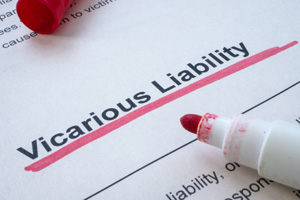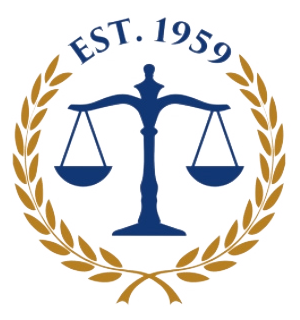
Vicarious liability holds one party responsible for another’s negligent actions when a specific relationship exists between them. This legal principle often applies in personal injury cases, especially when an employee causes harm while performing job duties. Compensation may be available when an employer bears responsibility for an employee’s actions.
At Byrd Davis Alden & Henrichson, LLP, our team helps clients understand how vicarious liability applies in personal injury cases. We provide guidance on legal options, the parties that may be held responsible, and the evidence needed to prove these claims.
How Vicarious Liability Applies in Personal Injury Cases
Vicarious liability allows an injured party to hold an employer or another entity responsible for an employee’s negligent actions. If an employee causes harm while performing job duties, the employer may be liable for damages. This principle operates under respondeat superior, which means “let the master answer.”
For example, if a delivery driver causes an accident while transporting goods, the employer may share liability if the driver acted within the scope of employment. Holding an employer accountable provides injured individuals with a greater chance of securing compensation, especially when an employer lacks the resources to cover damages.
Common Situations Where Vicarious Liability May Apply
Vicarious liability often arises in workplace-related incidents. Employers may be responsible when an employee causes a vehicle accident while driving a company car. Businesses in the healthcare industry may also face liability when medical staff members make mistakes that harm patients.
Independent contractors rarely fall under vicarious liability, but exceptions exist. If an employer exercises control over a contractor’s work, liability may still apply. Cases involving vicarious liability require careful analysis to determine responsibility and potential compensation.
Employers, Businesses, and Other Parties That Could Be Liable
Various parties may be held liable under vicarious liability laws. Employers bear primary responsibility when employees cause harm during work-related activities. Businesses overseeing contractors may also face legal claims if they maintain control over work conditions or processes.
Government agencies, schools, and healthcare institutions may share responsibility for negligence within their organizations. For instance, a school district may be liable if a teacher’s negligent actions harm a student. Identifying the responsible party remains essential when pursuing compensation.
Evidence Needed to Prove Vicarious Liability
Proving vicarious liability requires evidence linking an employer or business to an employee’s negligent actions. Demonstrating that the employee acted within job duties at the time of the incident strengthens a claim. Work schedules, job descriptions, and company policies often help establish this connection.
Documents showing an employer’s control over an employee’s actions further support a case. Employment contracts, supervisor communications, and internal reports may reveal a business’s influence over workplace decisions. Collecting strong evidence increases the likelihood of securing compensation.
Legal Defenses Against a Vicarious Liability Claim
Employers often argue an employee acted outside the scope of job duties to avoid liability. If an employee caused harm while engaged in personal activities, the employer may not bear responsibility. Proving the incident occurred during work hours and within assigned tasks strengthens a victim’s case.
Another common defense involves distinguishing independent contractors from employees. Businesses typically avoid liability for contractor actions unless they exert significant control over the work. Determining employment status plays a crucial role in legal disputes involving vicarious liability.
Additionally, an employer may assert the “frolic and detour” defense, which posits that an employee was not acting within the scope of their employment when the harmful act occurred. If the employee deviated significantly from their work duties for personal reasons, the employer may argue that they should not be held liable for the employee’s actions during that time.
Another effective defense is the assertion of “contributory negligence” or “comparative negligence.” In jurisdictions that follow these principles, if the plaintiff’s own negligence contributed to the harm, it may reduce or even eliminate the employer’s liability. For example, if the injured party failed to follow safety protocols, and this negligence contributed to the incident, the employer may argue that their liability is diminished.
Compensation Available in Cases Involving Vicarious Liability
Victims of vicarious liability cases may receive compensation for medical expenses, lost wages, and pain and suffering. These damages help individuals recover from injuries caused by another’s negligence. Courts may also award future compensation for ongoing medical care or loss of earning capacity.
Punitive damages may apply in cases where an employer’s actions show extreme negligence. Holding employers accountable helps prevent future incidents and ensures victims receive justice. Evaluating all potential damages provides a clearer picture of available legal options.
Schedule a Consultation with a Personal Injury Attorney
Legal guidance makes a difference when pursuing a vicarious liability claim. An experienced attorney can assess a case, determine responsible parties, and outline the best course of action.
At Byrd Davis Alden & Henrichson, LLP, our attorneys provide personalized legal support to help clients seek compensation. Contact us to discuss your case and learn more about legal options. Contact Byrd Davis Alden & Henrichson, LLP at (512) 489-9477 or use our contact form.

